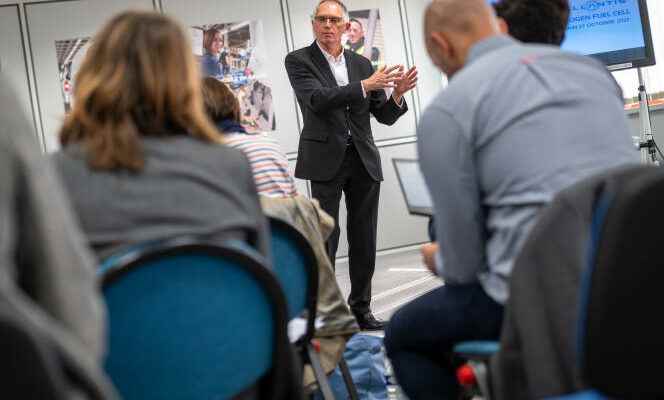Carlos Tavares, the general manager of Stellantis, traveled in person to Hordain, in the North, on Thursday, October 27, to announce the good news. It is to this plant of 2,342 employees that the mass production of hydrogen utility vehicles will be entrusted. In 2021, it assembled 144,621 vans, pickup trucks and family vehicles of six different brands (Peugeot Expert, Citroën Jumpy, Opel Vivaro, Fiat Scudo, Toyota Proace, etc.), thermal or electric. From 2023, this site will make additional hydrogen, i.e. three types of engine on the same assembly line, a world first. Since August, Hordain has already produced 43% of electric vehicles. A “precursor site”welcomed the boss.
“We don’t have the teams of the future on one side and the teams of the past on the other: everyone is together”, loose a leader of the group. This is “an ethical will”, specifies the press release from Stellantis, which tackles its competitors Renault or Ford. Carlos Tavares praises his model “One Company”while they have decided to separate their “electric vehicle” activities from those devoted to internal combustion engines, by housing them in different companies, in the face of the European decision to ban the sale of diesel or petrol vehicles in 2035.
Since 2021 already, Peuget and Citroën have been marketing utility vehicles running on hydrogen, with a fuel cell, but the vehicles left Hordain to be motorized in Rüsselsheim, in Germany, where the Opel research center on hydrogen is located. A few hundred of these vehicles were produced, mainly sold to energy companies. By 2024, Hordain will have the capacity to design 5,000 per year.
Continue to squeeze costs
For Aurèle Sabardeil, the director of the factory, this could come to grow by 40 to 50 people each of the three teams which take turns on this former Sevelnord site. Stellantis will invest 10 million euros for this activity, with public aid. News that reassures the unions (CGT and CFTC) on employment and the future of the place, but still leaves them worried about the rates, working conditions and wages. Because even if Carlos Tavares recognizes that “The light commercial vehicle is a profitable business” and that his group has a good market share (41.5% in France and 30% in Europe), he wants to continue to squeeze costs.
On the electrical side, today, Stellantis assembles batteries from China, but in two years, it hopes to obtain supplies at a better price from its gigafactory, designed with Mercedes and TotalEnergies, under construction in Douvrin (Pas-de-Calais). As for hydrogen, he is counting on mass production to reduce charges. Because today, this motorization may be of interest to “big wheels” professionals working in or near towns of 150,000 inhabitants, who will move into a ZFE (low emission zone) and ban diesel in the years to come. It offers a range of 400 kilometers and a recharge in a few minutes, faster than for electric vehicles. Problem: it is very expensive: 110,000 euros for a hydrogen utility vehicle, while an electric vehicle costs 40,000 euros and a thermal 30,000 euros.
You have 28.13% of this article left to read. The following is for subscribers only.
